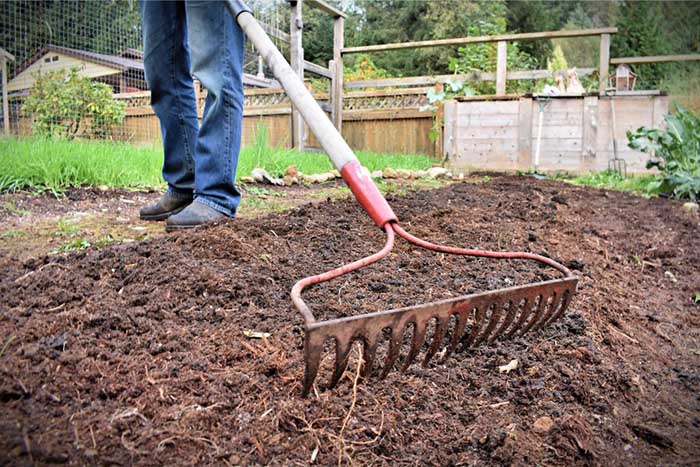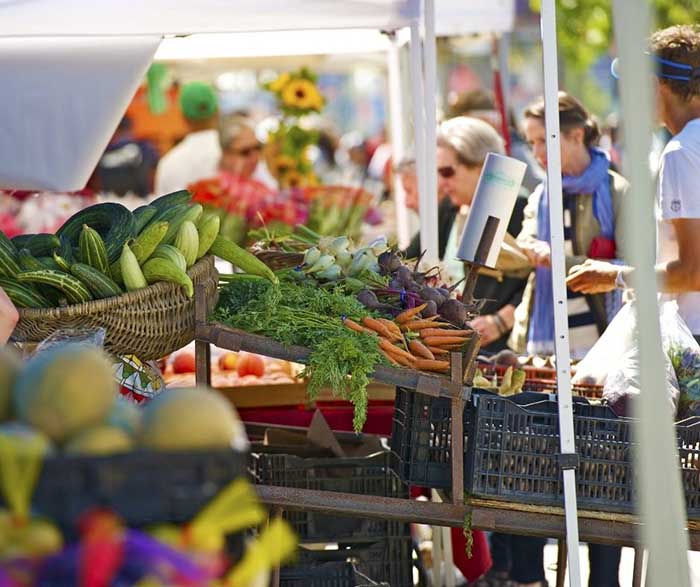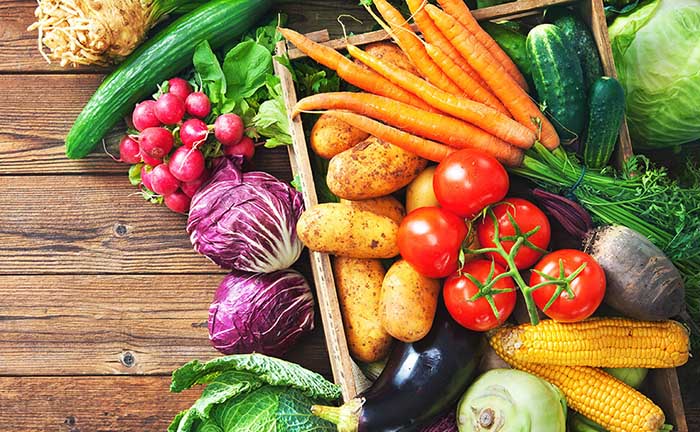Preparing your garden soil for planting is an essential step in ensuring a successful harvest. Properly preparing your soil can help improve soil health, increase plant growth, and prevent plant diseases. Before you start planting, it’s important to evaluate the soil in your garden and determine what amendments it needs.
Assessing Your Soil
Soil Type
The type of soil you have will affect the way you prepare it for planting. There are three main types of soil: sandy, clay, and loam. Sandy soil drains quickly but doesn’t hold nutrients well. Clay soil is dense and holds water, but can become compacted. Loam soil is a mixture of sand, clay, and organic matter and is considered the ideal soil type for gardening.
Soil pH
The pH level of your soil can affect the availability of nutrients to your plants. Most vegetables prefer a slightly acidic soil with a pH level between 6.0 and 7.0. You can test your soil pH with a home testing kit or by sending a sample to a soil testing lab.
Soil Nutrients
The nutrients in your soil are essential for plant growth. Nitrogen, phosphorus, and potassium are the three main nutrients that plants need in large quantities. You can test your soil for nutrient levels with a home testing kit or by sending a sample to a soil testing lab.
Soil Texture
Soil texture refers to the size of the particles in your soil. Fine-textured soil, such as clay, holds water and nutrients well but can become compacted. Coarse-textured soil, such as sand, drains quickly but doesn’t hold nutrients well. Loam soil, with a mixture of particle sizes, is considered the ideal soil texture for gardening.
By assessing your soil type, pH level, nutrient levels, and texture, you can determine the best way to prepare your garden soil for planting.
Clearing the Area
Before you can start preparing your garden soil for planting, you need to clear the area. This involves removing any debris, weeds, rocks, or other objects that may be in the way. Here are a few steps to guide you:
- Remove any large rocks or debris from the area. You can use a rake, shovel, or hoe to clear the area.
- Pull out any weeds or grass that may be growing in the area. You can use a hoe or hand trowel to dig out the roots.
- If the area is covered with grass, you can either remove the grass or smother it. To remove the grass, use a sod cutter or shovel to cut the grass and remove it. To smother the grass, cover the area with a layer of cardboard or newspaper and then cover it with a layer of mulch.
- Check the soil for any large roots or rocks that may be buried. Use a garden fork to loosen the soil and remove any obstacles.
Amending the Soil
To ensure a healthy and thriving garden, you need to amend the soil before planting. This process involves adding organic matter, such as compost or well-rotted manure, to the soil to improve its structure, fertility, and water retention.
First, you need to determine the soil’s pH level. You can do this by using a soil test kit, which will tell you whether the soil is acidic, neutral, or alkaline. Most plants prefer a slightly acidic soil with a pH between 6.0 and 7.0. If the soil is too acidic, you can add lime to raise the pH level. If it is too alkaline, you can add sulfur to lower the pH level.
Next, you need to loosen the soil by tilling or digging it. This will help the organic matter mix with the soil and improve its structure. However, be careful not to over-till, as this can damage the soil’s structure and lead to compaction.
After loosening the soil, you can add the organic matter. Spread a layer of compost or well-rotted manure over the soil and mix it in with a shovel or garden fork. The amount of organic matter you need to add depends on the soil’s texture and fertility. In general, you should aim to add about 2-3 inches of organic matter per year.
Finally, you can add other soil amendments, such as bone meal, blood meal, or greensand, to further improve the soil’s fertility. These amendments provide essential nutrients, such as nitrogen, phosphorus, and potassium, that plants need to grow.
Testing the Soil pH
It is important to test the soil pH to determine whether it is acidic, neutral or alkaline. This information will help you determine which plants will grow best in your garden.
To test the soil pH, you can use a soil pH test kit, which can be purchased at your local garden center. These kits typically come with test strips or a probe that can be inserted into the soil to give you a reading.
To use the test kit, follow these steps:
- Collect a soil sample from your garden using a trowel or shovel.
- Remove any debris or rocks from the soil sample.
- Add water to the soil sample and mix it well.
- Insert the test strip or probe into the soil according to the kit’s instructions.
- Wait for the recommended amount of time for the test to develop.
- Compare the color of the test strip or the reading on the probe to the pH chart provided with the kit.
If your soil pH is too acidic or too alkaline, you can adjust it by adding lime or sulfur to the soil. However, it is important to note that adjusting soil pH can take time and should be done gradually.
Adding Nutrients to Your Soil
Choose the Right Fertilizer
According to Backyard Gardeners Network, there are many types of vegetable fertilizers available in the market, each with different nutrient ratios. You should choose a fertilizer that is appropriate for your plant’s needs. For example, if you’re growing tomatoes, you may want to choose a fertilizer that is high in phosphorus, which is essential for fruit development.
Organic vs. Synthetic Fertilizers
Organic fertilizers are made from natural materials, such as compost, manure, or bone meal. They release nutrients slowly and are less likely to burn your plants. Synthetic fertilizers, on the other hand, are made from chemicals and release nutrients quickly. They can be more convenient to use, but they can also harm beneficial soil organisms.
Apply Fertilizer at the Right Time
You should apply fertilizer at the right time to maximize its effectiveness. For example, you should apply nitrogen-rich fertilizer when the plants are actively growing, and phosphorus-rich fertilizer when they are setting fruit.
Use Compost
Compost is an excellent source of nutrients for your garden soil. It contains a wide range of nutrients and also improves soil structure. You can make your compost by collecting kitchen scraps, yard waste, and other organic matter.
Test Your Soil
Before adding any fertilizer to your soil, you should test it to determine its nutrient levels. You can buy a soil testing kit or send a soil sample to a lab for analysis. This will help you determine which nutrients your soil needs and how much fertilizer you should apply.
Tilling the Soil
Tilling the soil is an important step in preparing your garden for planting. This process helps to break up compacted soil, improves drainage, and allows air and water to penetrate deeper into the soil.
Before you start tilling, remove any rocks, weeds, and other debris from the area. You can use a garden rake or hoe to do this.
Next, using a tiller or a garden fork, loosen the soil to a depth of at least 8 inches. If you are using a tiller, make sure to follow the manufacturer’s instructions and adjust the depth of the tines accordingly.
Once you have tilled the soil, add any necessary amendments such as compost, manure, or fertilizer. Spread these amendments evenly over the soil and mix them in using a garden rake or hoe.
Be careful not to over-till the soil, as this can damage the soil structure and lead to compaction in the long run. Also, avoid tilling when the soil is too wet, as this can also damage the soil structure and make it difficult to work with.
Creating Raised Beds
If you want to create a garden bed that is easier to maintain and provides better drainage, a raised bed is a great option. Here are a few steps to follow when creating raised beds:
- Choose a location: Pick a spot in your garden that gets plenty of sunlight and has good drainage. Avoid low-lying areas that can become waterlogged.
- Choose your materials: You can use a variety of materials to create raised beds, including wood, stone, brick, or concrete blocks. Make sure the materials you choose are sturdy and will hold up over time.
- Build your bed: Use your chosen materials to create a frame for your raised bed. Make sure the frame is level and sturdy. You can also add a layer of landscape fabric or cardboard to the bottom of the bed to prevent weeds from growing up through the soil.
- Fill your bed: Fill your raised bed with a mixture of soil, compost, and other organic matter. Aim for a mix that is about 60% topsoil, 30% compost, and 10% other organic matter.
- Plant your seeds or seedlings: Once your raised bed is filled with soil, you can start planting your seeds or seedlings. Follow the planting instructions for the specific plants you are growing.
Conclusion
In conclusion, preparing your garden soil for planting is an essential step in ensuring a successful garden. By taking the time to properly prepare your garden soil, you can set yourself up for a bountiful harvest and a beautiful garden. Happy planting!


